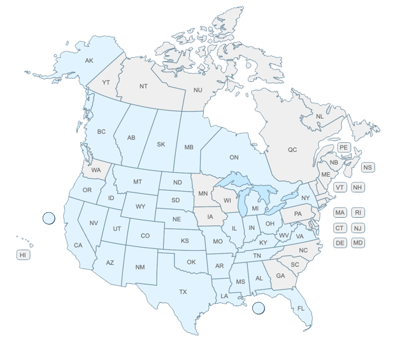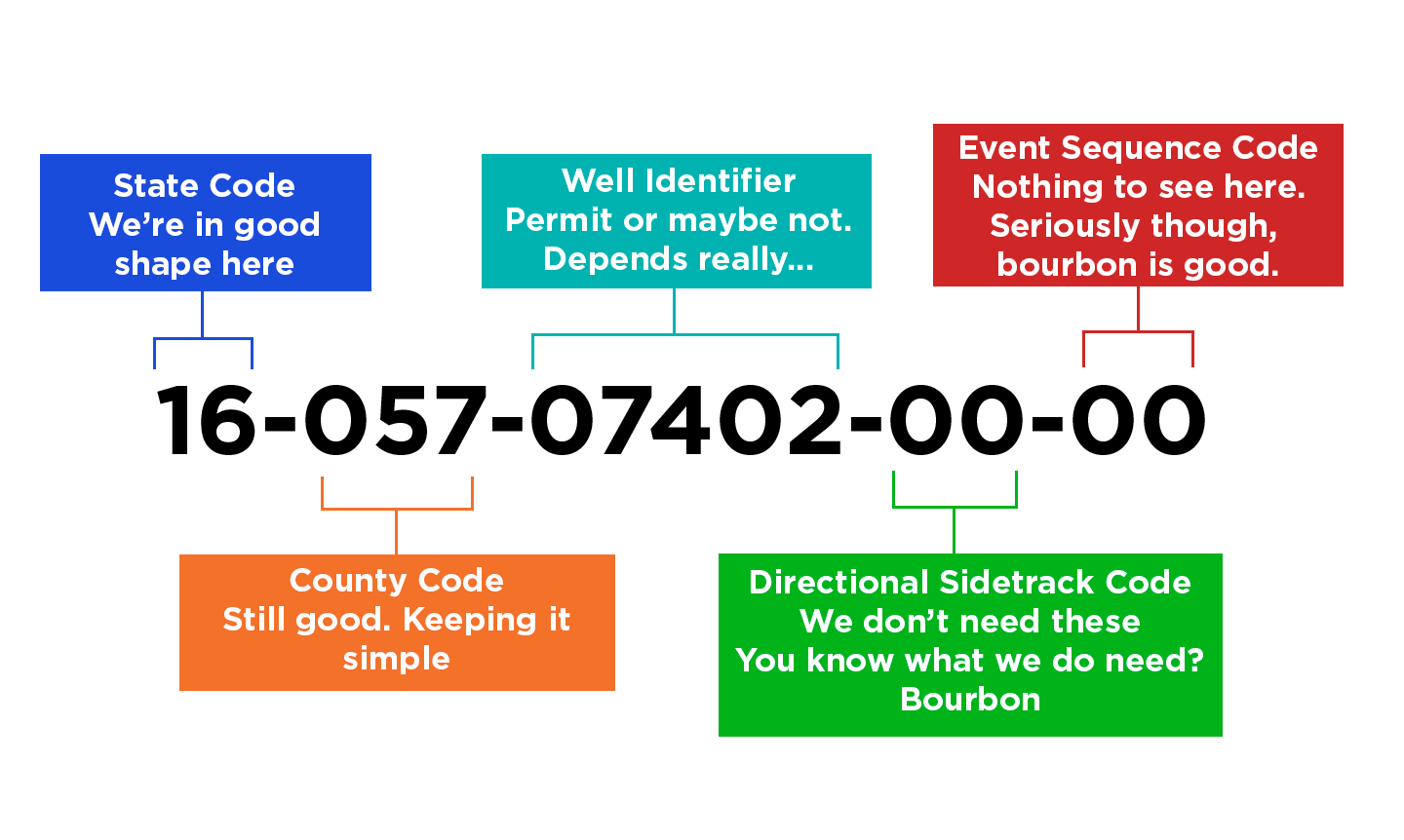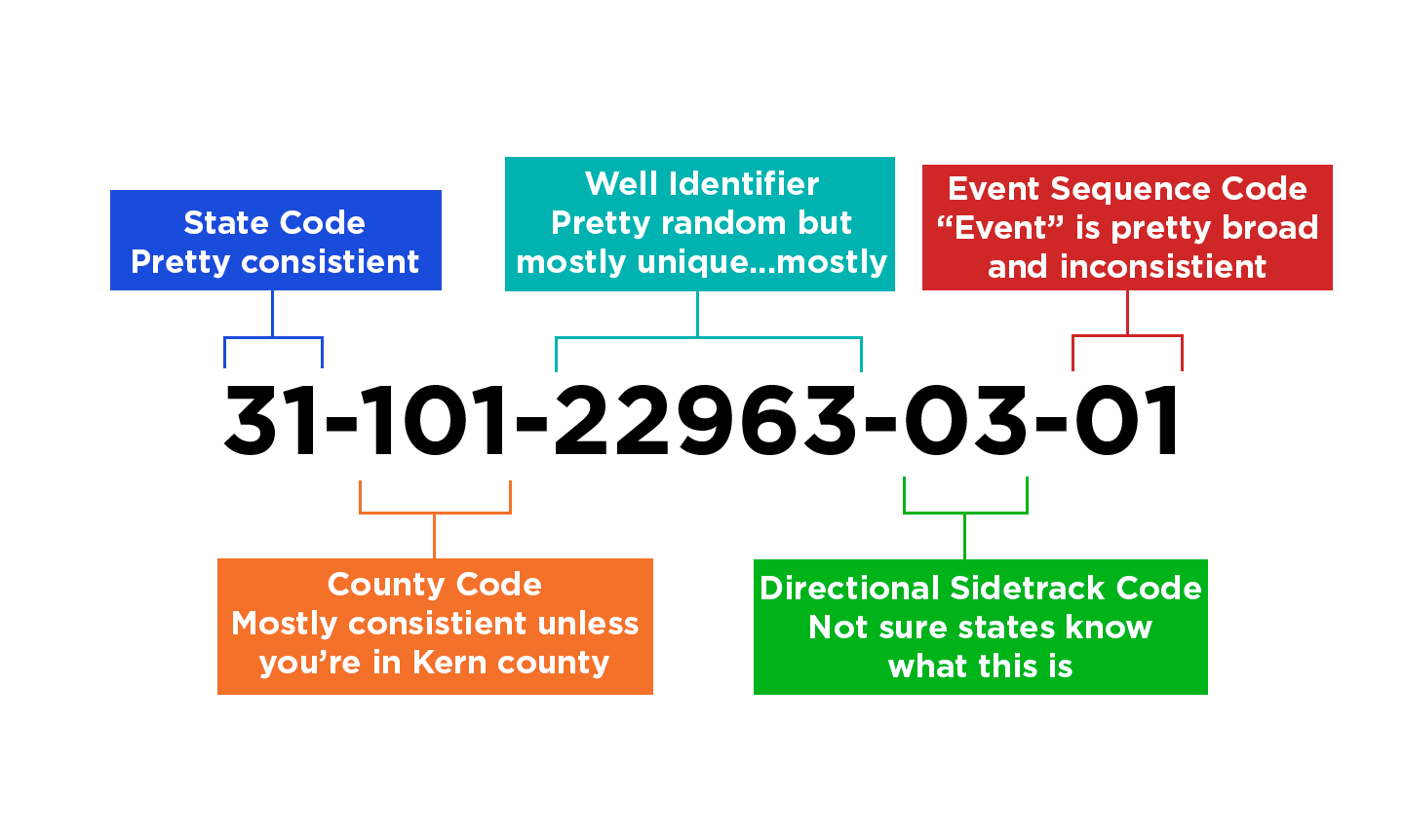1 min read
Virginia UWI (API) Numbers
The oil & gas mecca that is Virginia, you'd be surprised to know that they were unaware of this whole "API" thing before October of 2014. At that...
You need data. You need mapping. You need tools to analyze that data. Now you can do everything in a single, easy to use platform.
Perfect for users who need access to basic well level data. If you're only interested in a few wells and currently use state sites, this plan is for you.
The industry didn't start with unconventionals and neither does our data. We cover the full historical dataset across every producing state and province. Don't settle for inferior data, check out our coverage for any state or province you're interested in.


So there is no bourbon in this blog, but having a glass of bourbon first will surely help you better understand APIs in Kentucky. At least it couldn't hurt.This blog is the latest in our series all about our favorite well identifier, the API number. We talk to a lot of users and we find that there is a lot of misunderstandings about what exactly the API number is and is not. This series is aimed at trying to help clear up some of those misunderstandings and give insight into how we handle the API issues and inconsistencies here at WellDatabase.If you missed it, check out the other blogs in the series
The Kentucky Division of Oil and Gas was formed in 1960 and the official assignment of the UWI (API) number began at that time. Originally, they assigned a 10 digit UWI (API) number. Zero filling the 11th -14th digits came about when the Division of Oil and Gas adopted the Risk Based Data Management System (RBDMS) which could accommodate a 14-digit (UWI) API number. The criteria for the UWI (API) assignment was:
The state and county codes were established by industry when the use of the UWI (API) number came into effect. An example of consecutive permits issued in different counties are Permit #113388 (API 16-137-00366-00-00), which is in Lincoln County and Permit #113389 (API 16-177-05196-00-00), which is in Muhlenberg County. The Kentucky Division of Oil and Gas adopted the UWI (API) number standard quite some time before the 6-digit permit occurred, it might have been when they implemented RBDMS. The standard originated when the American Petroleum Institute (API) along with industry set forth the D12A publication and later when the API transferred ownership to the PPDM Association. A thorough review by PPDM and industry took place at that time. Many think the 6-digit permit number which was approved in Sept 2006 was the impetus for moving away from using the permit number for the well ID portion of the UWI (API) number, but the staff at the Kentucky Division of Oil and Gas has informed me that this was not the case.
Kentucky wells permitted prior to 1960 but have a permit number, were assigned a UWI (API) number and, again, using the permit number for the last five digits of the UWI (API) number. Wells were not renumbered when changes were made to the permit file. Each well retained it’s original UWI (API) number except in cases of subsequent operations which is discussed later in this blog.
As wells are discovered that were drilled prior to 1955, which is the year that permit numbers started being assigned, they are given the next sequential permit number in that county and the UWI (API) is assigned. These permit numbers always begin with an N. When the permit number is assigned with a leading N, the Kentucky Division of Oil and Gas system assigns the next sequential number in that county for the well ID portion of the UWI (API) 6th – 10th digits. Examples are as follows:
No permit number was issued for the majority of wells drilled before about 1955. Many wells have been added to Kentucky Division of Oil and Gas database as orphan wells are discovered or wells are transferred but there are still quite a lot of undiscovered wells in Kentucky with no UWI (API) number.
It is important to know that a drilling permit is good for one year in Kentucky so if subsequent operations were done within the year period, the subsequent operations were assigned the same original 10-digit UWI (API) number with zero filled 11th through 14th digits making it difficult to determine how many events took place within that year. If, however, the subsequent operations took place after the permit expiration date, the subsequent operation was assigned a new UWI (API) number.
An example of this is the G L Wisdom #2 in Cumberland County (county code of 057):
This could cause confusion if notations are not picked up and/or your record key is the UWI (API) number.
It is interesting to realize that the Division of Oil and Gas assigns the UWI (API) number but actually uses the Permit Number to identify wells in their database. The Kentucky Geological Survey (KGS) assigns a record number which is also used, by many, as the well identifier.
v2.png)
1 min read
The oil & gas mecca that is Virginia, you'd be surprised to know that they were unaware of this whole "API" thing before October of 2014. At that...
%20NUMBERS-1.jpg)
Michigan’s use of the 14-digit UWI/API Number is somewhat unique, particularly in the 11th through 14th digits. Be sure and read the explanation...

3 min read
This blog is the first in a series all about our favorite well identifier, the API number. We talk to a lot of users and we find that there is a...